Abstract
The kinetic parameters for release of fibrinopeptide A (FPA) from human fibrinogen by thrombin are: Km = 2.3 X 10(-6)M and Vmax. = 1.1 X 10(-10)mol of FPA/s per unit of thrombin; for fibrin formation, Km is similar to that for FPA release, but, the conditions of the present study, Vmax. was approximately half of that for FPA release. The formation of fibrin polymer before the sol-gel transition was studied by gel-permeation chromatography combined with effluent analysis for fibrinogen antigen and residual FPA. Polymer formation in purified fibrinogen incubated with thrombin proceeded as a bimolecular association of exposed sites in a manner predicted by probability calculations and assuming random FPA cleavage. Each oligomer consisted of n molecules of fibrin monomer and two fibrinogen molecules, each of the latter lacking one FPA molecule, i.e. each oligomer, regardless of molecular size, retains two FPA molecules. The addition of 5 mM-CaCl2 to the reaction mixture changed the rate of polymer formation, so that dimer was no longer the prevalent oligomer; in the presence of Ca2+, the trimer was the oligomer in highest concentration. The polymers formed in the presence of calcium were similar in composition to those without, i.e. 2 mol of FPA/mol of oligomer. EDTA-treated plasma samples incubated for short periods of time, 30s or less, with thrombin ranging in concentration up to 1 N.I.H. unit/ml did not form clots during the 10-15 min period of observation until they were applied to the column, though a large proportion of the available FPA was cleaved (maximum 45%). The soluble polymers in plasma were mostly of the high-Mr variety (tetramer and greater); these high-Mr polymers contained less than 2 mol of FPA/mol of polymer, whereas dimer and trimer in plasma were similar to those in the purified systems, i.e. 2 mol of FPA/mol.
Full text
PDF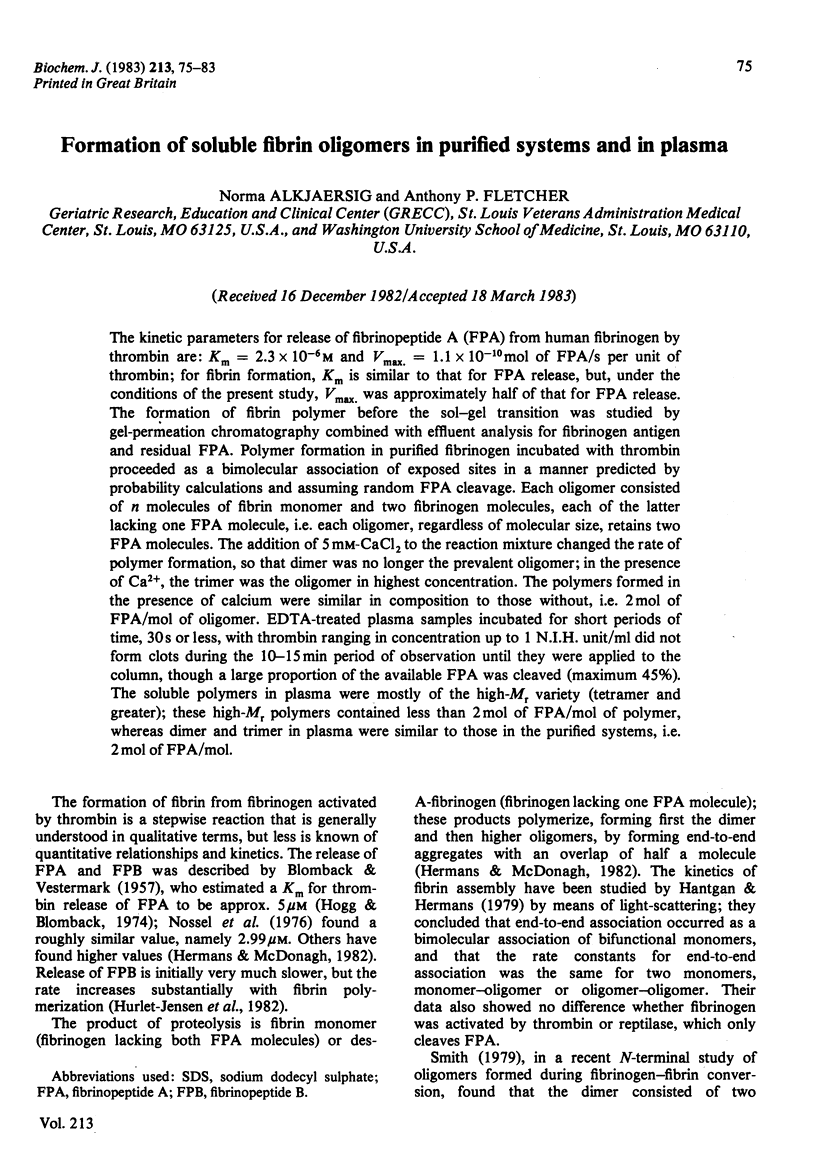
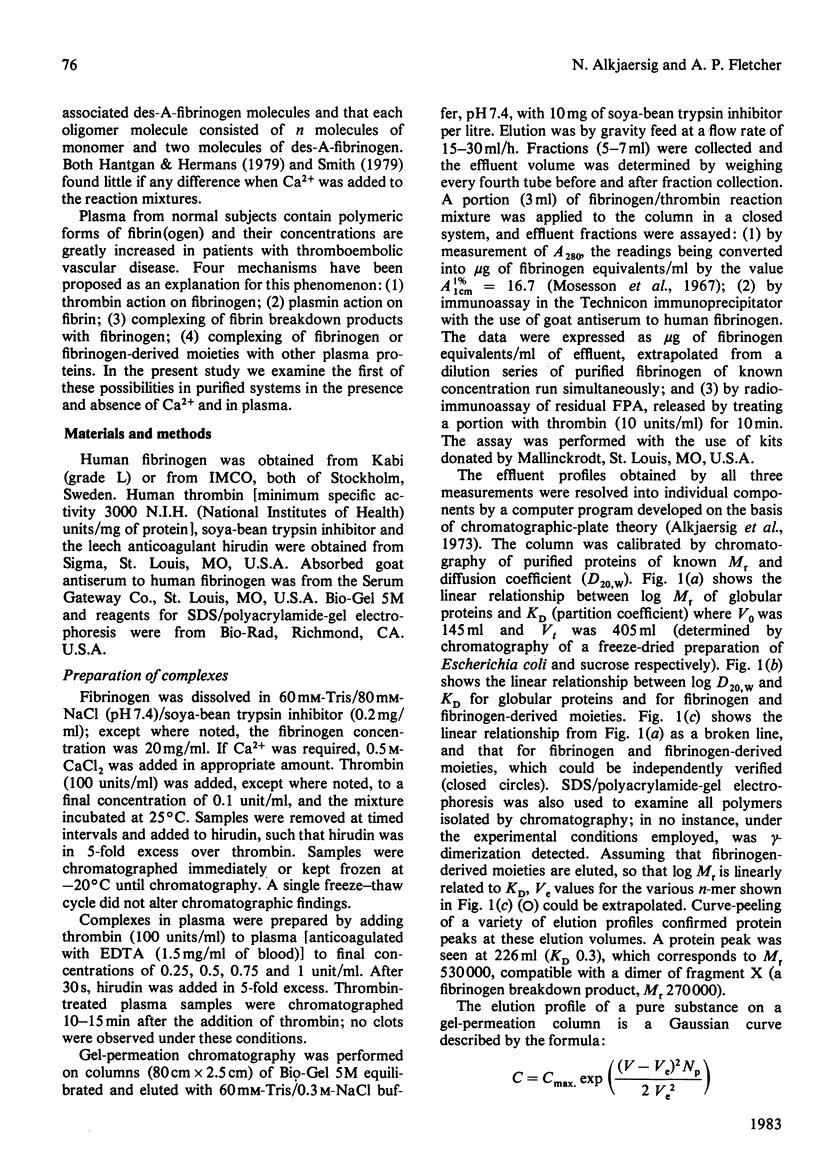
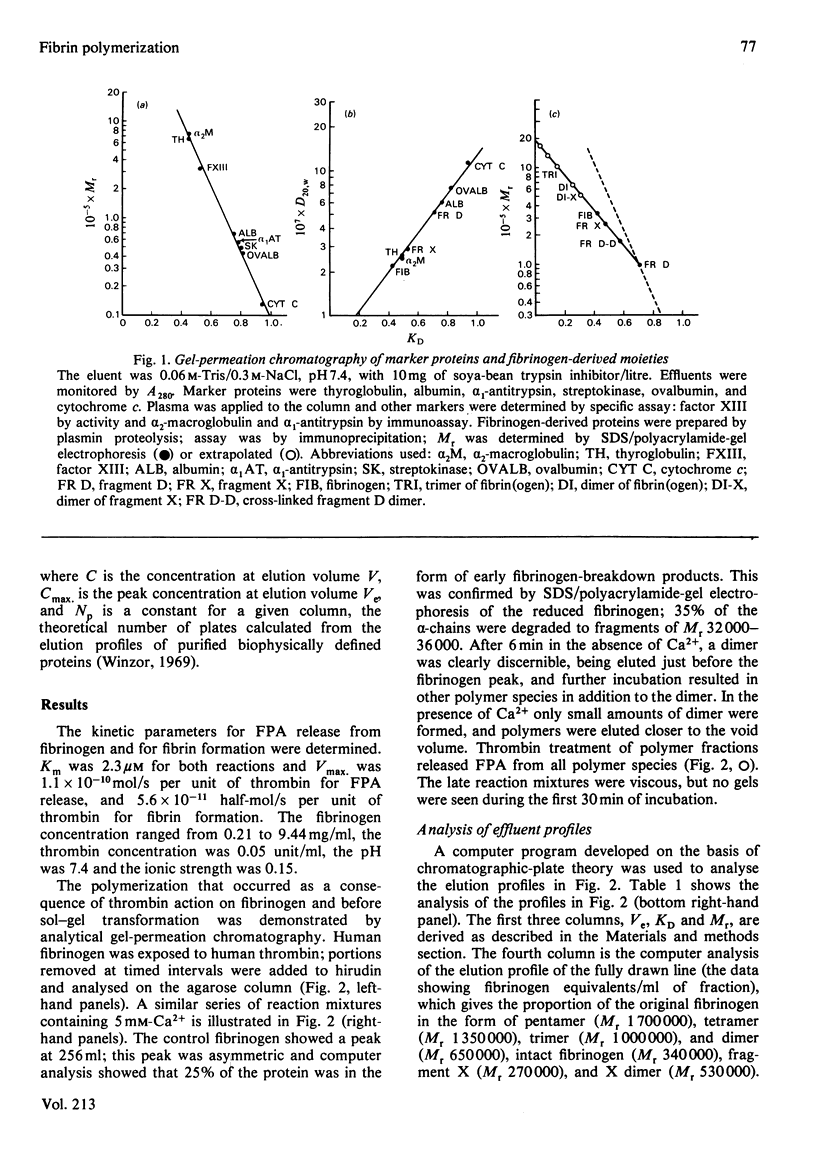
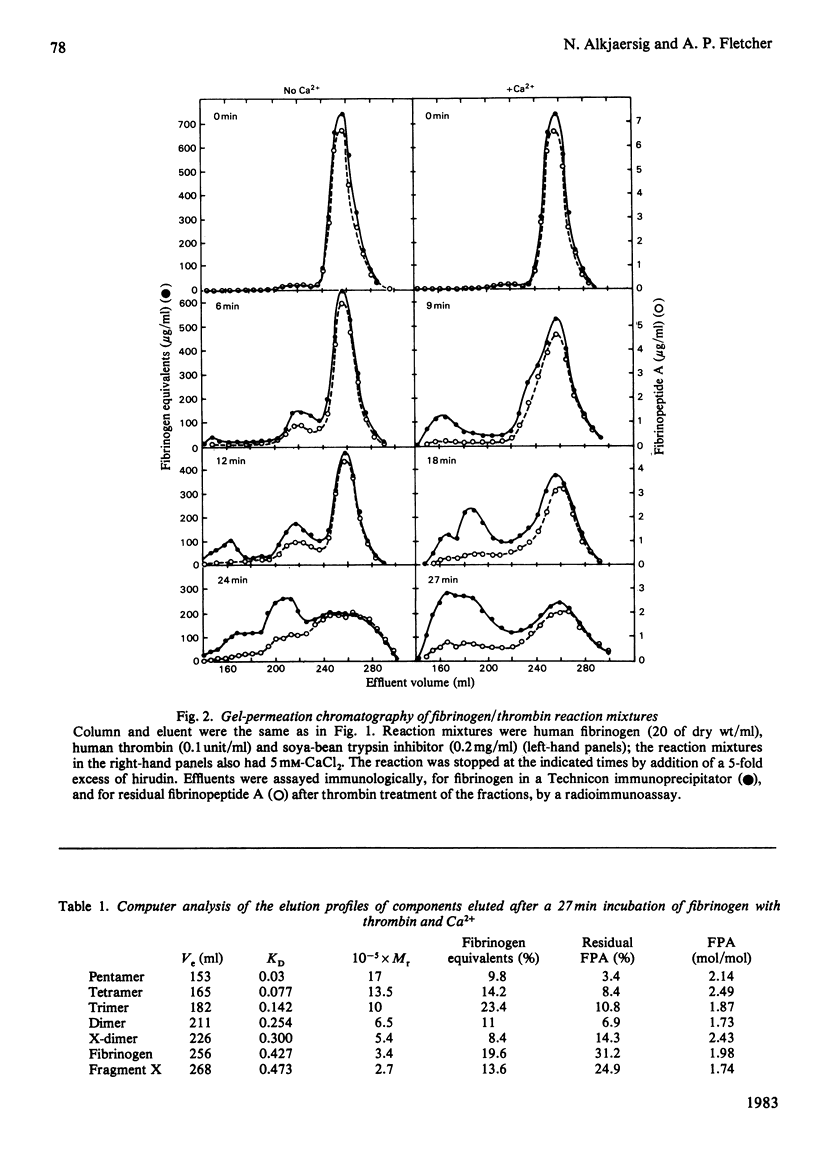
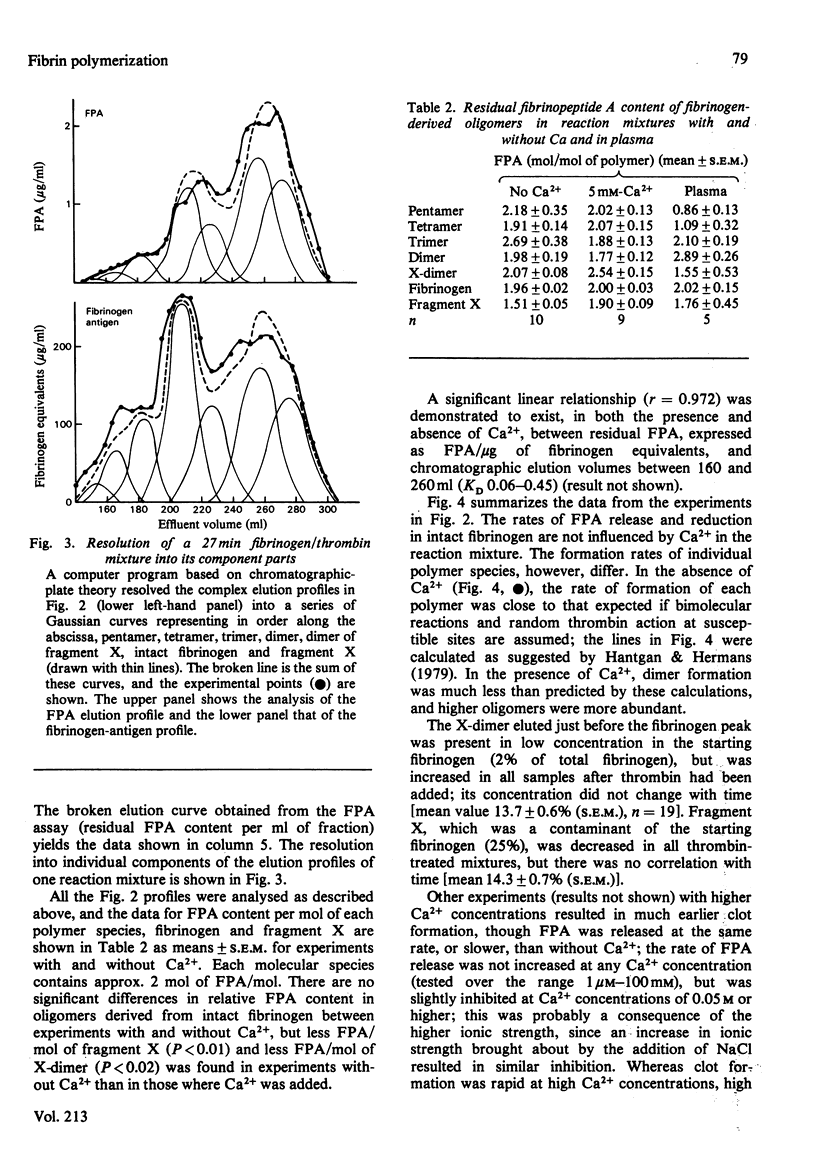
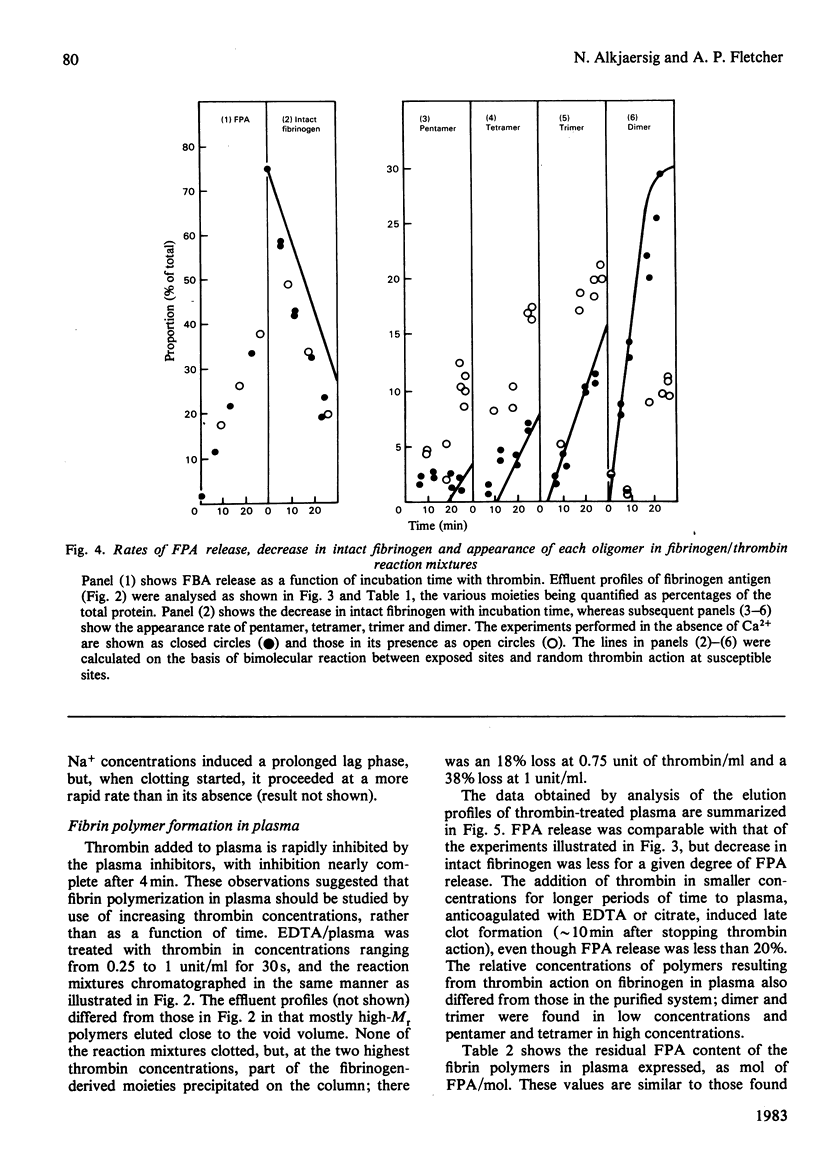
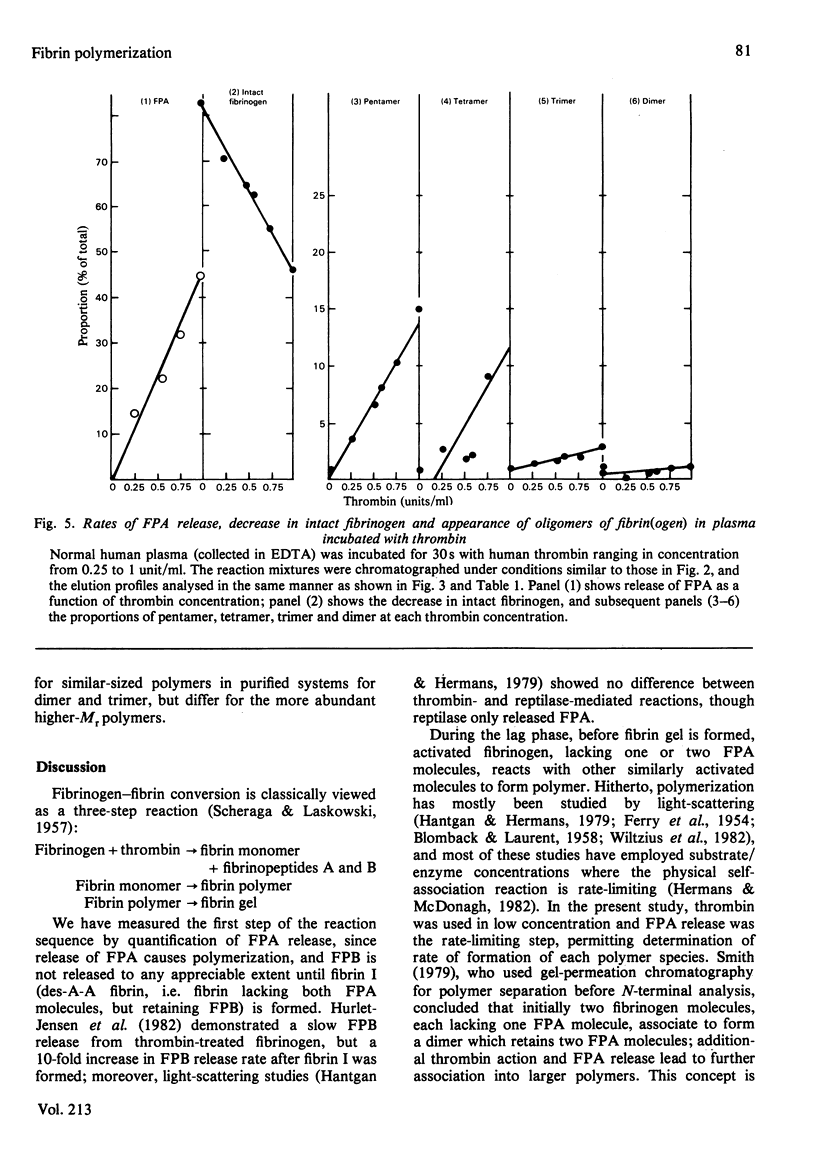

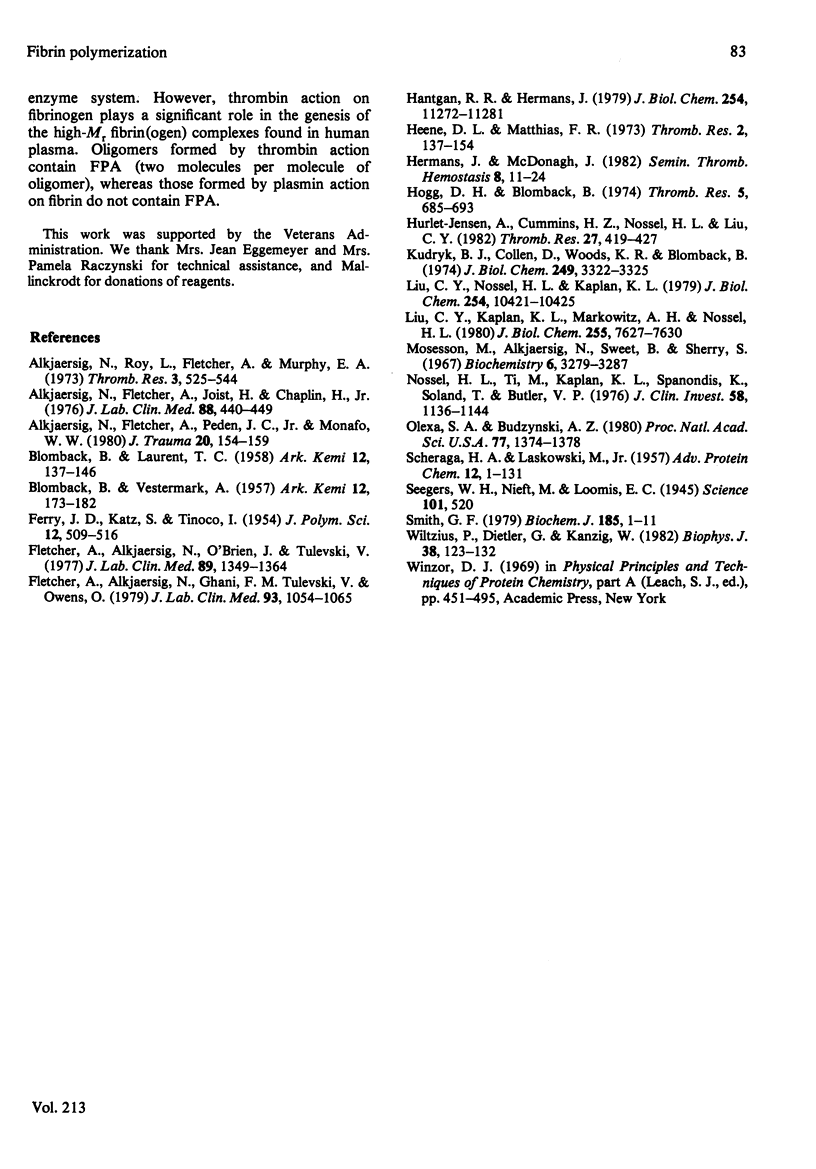
Selected References
These references are in PubMed. This may not be the complete list of references from this article.
- Alkjaersig N., Fletcher A. P., Peden J. C., Jr, Monafo W. W. Fibrinogen catabolism in burned patients. J Trauma. 1980 Feb;20(2):154–159. doi: 10.1097/00005373-198002000-00009. [DOI] [PubMed] [Google Scholar]
- Alkjaersig N., Fletcher A., Joist H., Chaplin H., Jr Hemostatic alterations accompanying sickle cell pain crises. J Lab Clin Med. 1976 Sep;88(3):440–449. [PubMed] [Google Scholar]
- Fletcher A. P., Alkjaersig N. K., Ghani F. M., Tulevski V., Owens O. Blood coagulation system pathophysiology in acute myocardial infarction: the influence of anticoagulant treatment on laboratory findings. J Lab Clin Med. 1979 Jun;93(6):1054–1065. [PubMed] [Google Scholar]
- Fletcher A. P., Alkjaersig N. K., O'Brien J. R., Tulevski V. Fibrinogen catabolism in the surgically treated patient and in those with postoperative venous thrombosis. Correlation of plasma fibrinogen chromatographic findings with 125I-labeled fibrinogen scan findings. J Lab Clin Med. 1977 Jun;89(6):1349–1364. [PubMed] [Google Scholar]
- Hantgan R. R., Hermans J. Assembly of fibrin. A light scattering study. J Biol Chem. 1979 Nov 25;254(22):11272–11281. [PubMed] [Google Scholar]
- Hermans J., McDonagh J. Fibrin: structure and interactions. Semin Thromb Hemost. 1982 Jan;8(1):11–24. doi: 10.1055/s-2007-1005039. [DOI] [PubMed] [Google Scholar]
- Hogg D. H., Blombäck B. The specificity of the fibrinogen-thrombin reaction. Thromb Res. 1974 Nov;5(5):685–693. doi: 10.1016/0049-3848(74)90057-7. [DOI] [PubMed] [Google Scholar]
- Hurlet-Jensen A., Cummins H. Z., Nossel H. L., Liu C. Y. Fibrin polymerization and release of fibrinopeptide B by thrombin. Thromb Res. 1982 Aug 15;27(4):419–427. doi: 10.1016/0049-3848(82)90059-7. [DOI] [PubMed] [Google Scholar]
- Kudryk B. J., Collen D., Woods K. R., Blombäck B. Evidence for localization of polymerization sites in fibrinogen. J Biol Chem. 1974 May 25;249(10):3322–3325. [PubMed] [Google Scholar]
- Liu C. Y., Kaplan K. L., Markowitz A. H., Nossel H. L. Thermodynamic characterization of thrombin binding by cross-linked and non-cross-linked fibrin in the presence and absence of Ca2+. J Biol Chem. 1980 Aug 25;255(16):7627–7630. [PubMed] [Google Scholar]
- Liu C. Y., Nossel H. L., Kaplan K. L. The binding of thrombin by fibrin. J Biol Chem. 1979 Oct 25;254(20):10421–10425. [PubMed] [Google Scholar]
- Mosesson M. W., Alkjaersig N., Sweet B., Sherry S. Human fibrinogen of relatively high solubility. Comparative biophysical, biochemical, and biological studies with fibrinogen of lower solubility. Biochemistry. 1967 Oct;6(10):3279–3287. doi: 10.1021/bi00862a038. [DOI] [PubMed] [Google Scholar]
- Nossel H. L., Ti M., Kaplan K. L., Spanondis K., Soland T., Butler V. P., Jr The generation of fibrinopeptide A in clinical blood samples: evidence for thrombin activity. J Clin Invest. 1976 Nov;58(5):1136–1144. doi: 10.1172/JCI108566. [DOI] [PMC free article] [PubMed] [Google Scholar]
- Olexa S. A., Budzynski A. Z. Evidence for four different polymerization sites involved in human fibrin formation. Proc Natl Acad Sci U S A. 1980 Mar;77(3):1374–1378. doi: 10.1073/pnas.77.3.1374. [DOI] [PMC free article] [PubMed] [Google Scholar]
- Seegers W. H., Nieft M., Loomis E. C. NOTE ON THE ADSORPTION OF THROMBIN ON FIBRIN. Science. 1945 May 18;101(2629):520–521. doi: 10.1126/science.101.2629.520. [DOI] [PubMed] [Google Scholar]
- Smith G. F. Fibrinogen-fibrin conversion. The mechanism of fibrin-polymer formation in solution. Biochem J. 1980 Jan 1;185(1):1–11. doi: 10.1042/bj1850001. [DOI] [PMC free article] [PubMed] [Google Scholar]
- Wiltzius P., Dietler G., Känzig W., Hofmann V., Häberli A., Straub P. W. Fibrin aggregation before sol-gel transition. Biophys J. 1982 May;38(2):123–132. doi: 10.1016/S0006-3495(82)84539-6. [DOI] [PMC free article] [PubMed] [Google Scholar]


